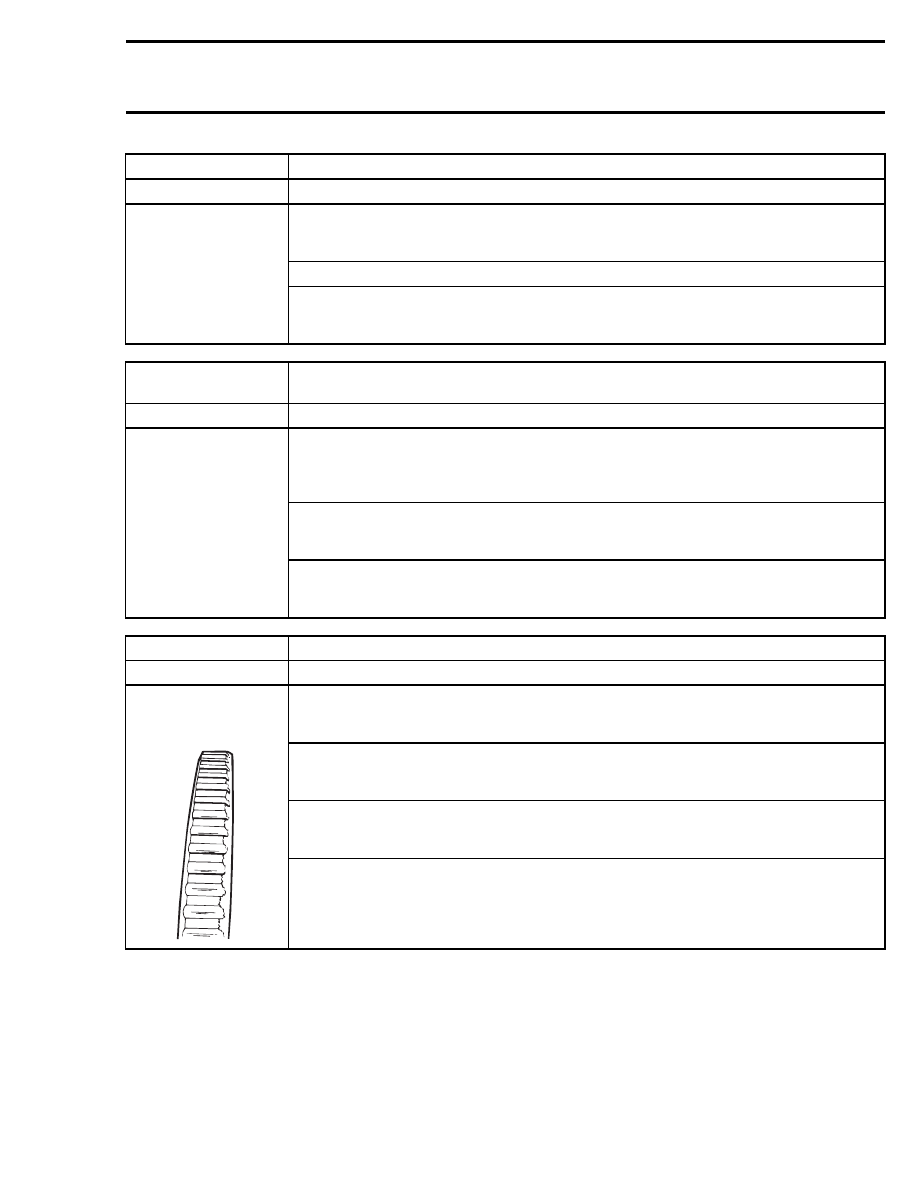Snowmobile Ski Doo REV SERIES (2006 year). Instruction - part 10

Section 02 TROUBLESHOOTING
Subsection 03 (DRIVE AND BRAKE SYSTEMS)
SYMPTOM
PULLEYS DO NOT DOWN SHIFT PROPERLY.
CONDITION
NORMAL USE
1. Check driven pulley spring tension.
a. Spring tension is too low.
Adjust according to specifications (refer to TECHNICAL DATA) or replace spring.
2. Refer to VIBRATIONS COMING FROM DRIVEN PULLEY and check items listed.
TEST/INSPECTION
3. Check drive pulley bushings (cleanliness, wear, etc.).
a. Bushings stick to fixed half pulley shaft.
Clean or replace.
SYMPTOM
IN REVERSE ENGINE FAILS AND DRIVEN PULLEY OPENS TOO FAST (DRIVE BELT IS LOW IN DRIVEN
PULLEY).
CONDITION
NORMAL USE
1. Check pulley alignment.
a. Improper adjustment.
Adjust according to specifications (refer to PULLEY ALIGNMENT) and make sure that engine stopper is
resting against engine.
2. Check for reverse sliding shoes.
a. Sliding shoes are worn or missing.
Replace sliding shoes.
TEST/INSPECTION
3. Check spring.
a. Spring is weak or insufficient tension.
Replace spring.
SYMPTOM
UNEVEN BELT WEAR ON ONE SIDE.
CONDITION
NORMAL USE
TEST/INSPECTION
1. Check tightening torque of engine mount bolts.
a. Loose engine mount.
Tighten mount nuts/bolts equally.
2. Check pulley alignment.
a. Pulley misalignment.
Align pulleys.
3. Check drive belt contact area on pulleys.
a. Rough or scratched pulley surfaces.
Repair or replace pulley half.
4. Check driven pulley sliding half play.
a. Driven pulley bushing worn.
Replace bushing.
mmr2005-065
27